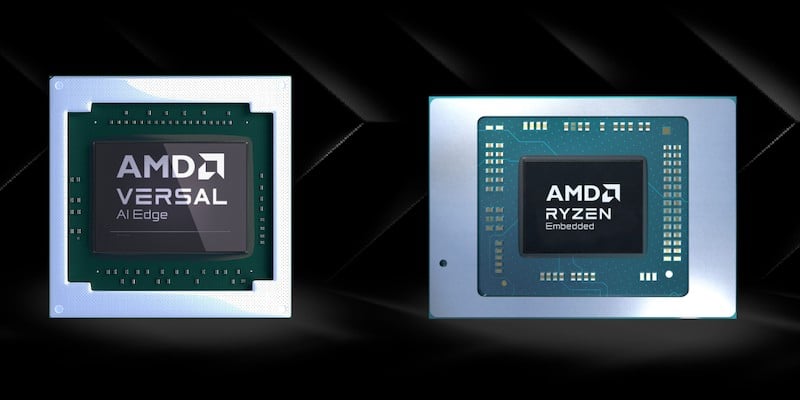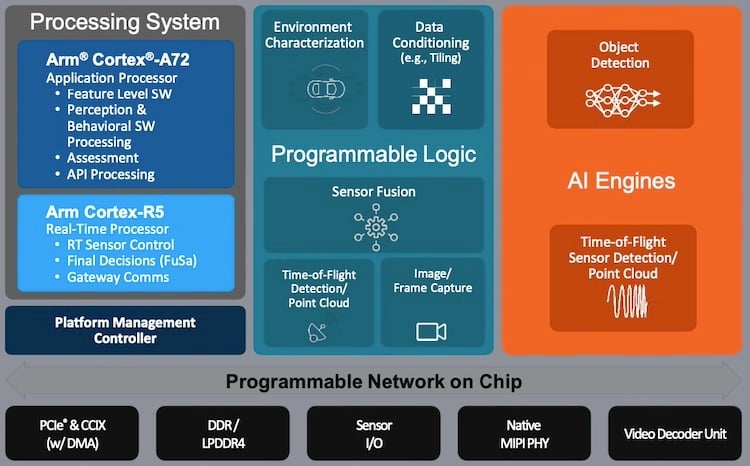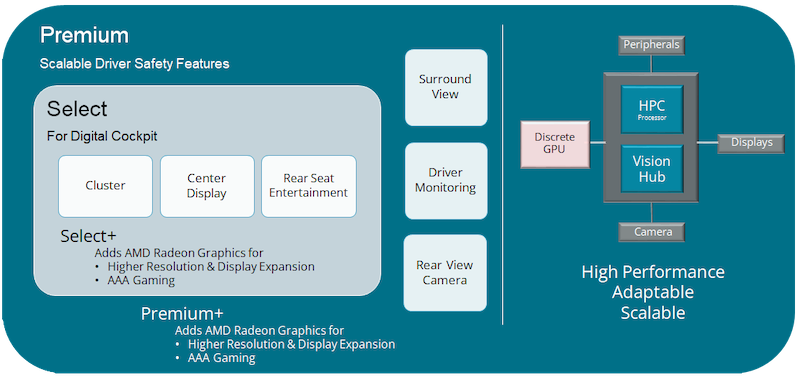AMD Launches Advanced Processor and AI-Driven SoC Tailored for Vehicle Applications
During CES, AMD advocates for a new era of smarter next-gen vehicles powered by its novel embedded processor and adaptive system-on-chips (SoCs).
Our CES (Consumer Electronics Show) highlights commence with AMD's unveiling designed to boost computational prowess within the automotive sector. CES 2024 is in full swing from January 9th to 12th in Las Vegas.
AMD has taken the stage at the event to introduce two innovative chips engineered to revolutionize the automotive industry. These cutting-edge components are set to become integral to vehicle systems, opening doors to enhanced functionalities and capabilities.

Each of AMD’s two new chips, the Versal AI Edge XA and V2000A, provide new processing power and features to automotive designers looking to leverage the latest technology.
With the proliferation of AI/ML across all sectors, designers are increasingly turning towards specialized AI accelerators and cutting-edge processors to meet demanding performance requirements. In this vein, AMD's pair of new chips could significantly empower automotive developers with enhanced resources for diverse applications.
To delve deeper into the intricacies of these new chips, we had an insightful discussion with AMD experts: Wayne Lyons, the Senior Automotive Marketing Director; Rehan Tahir, the Senior Automotive Product and Marketing Manager; and Amey Deosthali, the Senior Director of Embedded Product Marketing. Our conversation centered around the transformative impact that AMD's latest offerings could have on the automotive landscape.
Introducing the Versal AI Edge XA Series for Automotive AI
AMD has unveiled its latest innovation for the automotive industry - the Versal AI Edge XA series of adaptive SoCs. These are specifically engineered to enhance automotive signal processing and sensor fusion tasks that benefit from AI augmentation. The series features bespoke AI engines adept at optimizing a multitude of applications, from advanced forward-facing cameras to sophisticated in-cabin driver monitoring systems, all within a singular automotive-qualified package.
The AI engines embedded in these SoCs are versatile, capable of running a variety of AI models such as those for classification or feature recognition. The lineup boasts a broad spectrum of configurations, with offerings that span from 20,000 to 521,000 look-up tables, delivering AI performance that ranges from 5 TOPS to an impressive 171 TOPS. This scalability enables designers to easily transfer their designs to the most suitable hardware, matching the processing power requirement of their application. For more detailed specifications and capabilities, interested parties can refer to the comprehensive Versal AI Edge XA data sheet.

The Versal AI Edge XA adaptive SoC provides designers with AI-accelerated support to accomplish feature tracking or object recognition, or improved signal processing or sensor fusion leveraging the onboard AI engine.
While not every automotive feature benefits from AI, many emerging technologies could make use of AI-enabled processing to improve performance. “When we talk about AI, AI is critical for these automotive applications everywhere, from forward camera, driver monitoring, or surround view,” says Rehan Tahir. “AI and automotive are becoming kind of intertwined.”
Next-Gen Processing Power for Automobiles
In conjunction with AI acceleration, AMD also announced that its latest embedded processor, the Ryzen Embedded V2000A, has passed qualification and is entering mass production. While AI performance and hardware acceleration is certainly a benefit for many applications, the V2000A processor compliments the application-specific nature of the Versal AI series by providing a high-performance processor to enable new automotive features.

The V2000A provides new processing power to support more innovation in-cabin, including infotainment, driver assistance, and data visualization.
This new processing power comes at a welcome time as more manufacturers move away from distributed processing. “We see OEMs pretty aggressively moving towards centralized architectures and having a move towards reducing the ECUs,” says Amey Deosthali. “What that is doing is driving new chip architecture.”
Containing CPU and GPU in one, the V2000A makes use of AMD’s Zen2 cores and 7 nm process technology to bring a “PC-like” experience to automobiles. Applications such as infotainment, digital cockpit, and high-level sensing are expected to benefit from the new embedded processing power and digital graphics rendering.
Synergistic Innovation
This week at CES, AMD is showing both new devices, as well as demonstrating how they can work together in a system. Wayne Lyons described the unified AMD ecosystem and CES demo.
“This in-vehicle experience demonstration, I think will be a good way to see the impact of the combination of our ADAS technology for surround view, visualization, and driver monitoring, combined with the in-cabin experience that can be delivered by the V2000.”
Both the Versal AI Edge XA and V2000A series build on each other to form a broader AMD automotive ecosystem. While the AI Edge can perform specific functions such as feature tracking or driver monitoring, the V2000A can update in-cabin displays simultaneously and process sensor data to perform driver assistance. As a result, the number of features in next-generation vehicles could see a big boost thanks to the AMD devices.
You can visit AMD at its CES “AMD Connect” exhibition located in the Venetian Expo - Titian 2302-2305.
All images used courtesy of AMD







